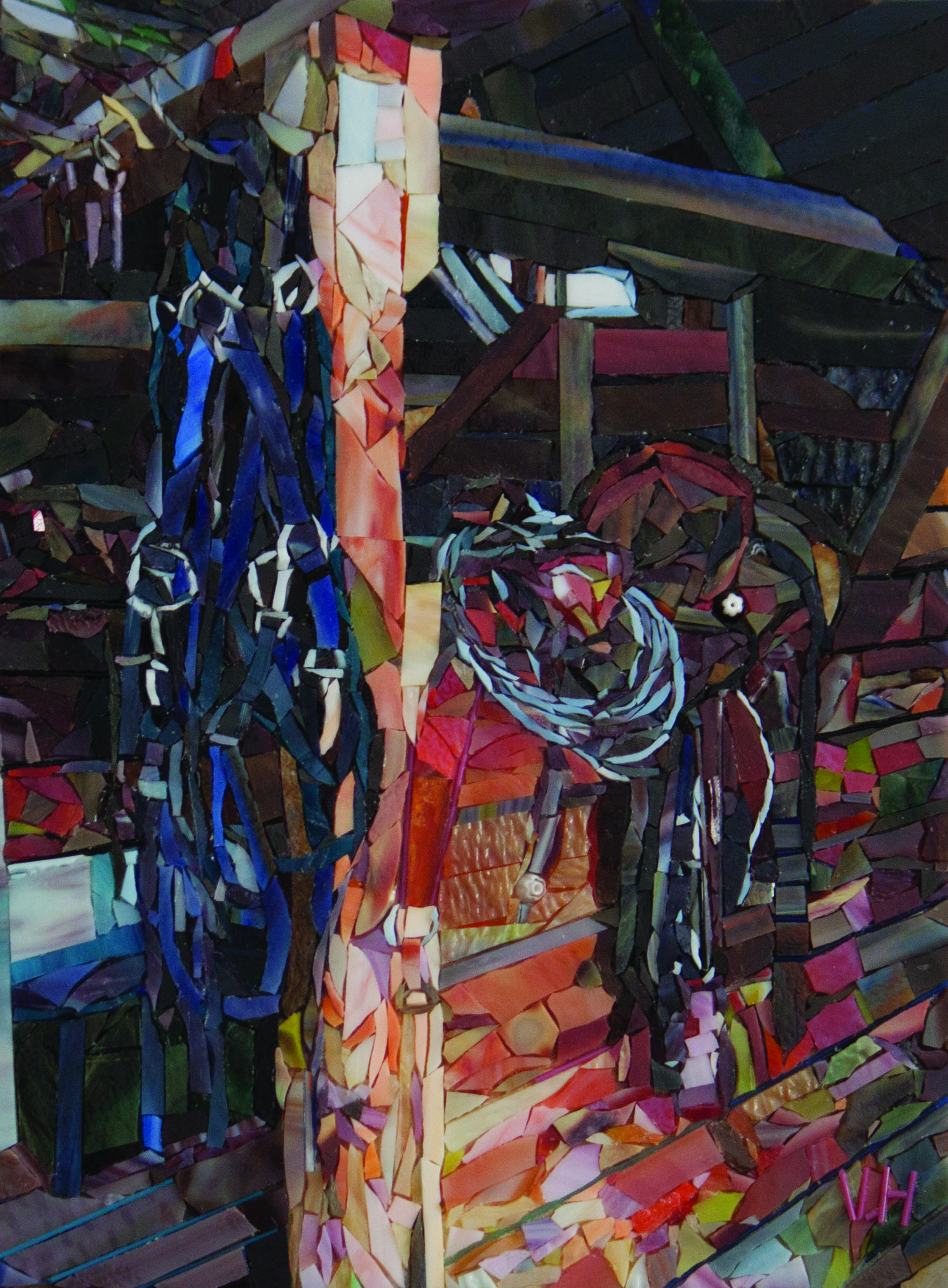
Decked out in hat, boots, and Western shirt, Valerie Hollstein blends in easily in her adopted home state of Utah — until she speaks.
Even after 32 years of living there, her accent betrays her French origin. Though she now finds her subject matter in the American West, Hollstein credits her childhood in the South of France with making her the artist she is today. “I grew up about 30 miles away from Camargue, a wetland area at the mouth of the River Rhône where indigenous white horses live in semi-liberty and can be ridden along the Mediterranean Sea. As a child I would visit Camargue [Regional] Nature Park, and one of my first drawings as a 6-year-old was of a horse.” Unstructured play, Hollstein says, influenced her creativity and imagination, whether she was outside feeling the sun on her skin while smelling lavender and thyme that grew in the wild or sitting in a church staring at stained-glass windows, enthralled by the shifting colors and plays of light.
Later, these childhood inspirations would find creative expression in vitreous glass painting, a process in which she chooses and assembles shards of colored glass to compose images. Today Hollstein creates her glass pieces in suburban Salt Lake City, where she lives with her Utah-born husband, daughter, son, and three cats in view of the Wasatch Mountains. We spoke with her as she prepared for the upcoming Calgary Stampede Art & Lifestyle Show.

Cowboys & Indians: You’re heading back to Calgary for the Stampede, but you were in Alberta not long ago for another art-related experience.
Valerie Hollstein: I recently spent a three-day weekend at the OH and Bar U ranches offered by the Calgary Stampede Artist Ranch Project. The experience was a major contribution to my understanding of values in Western ranching societies. It made me aware that ranching was more than a way to make a living: It’s a proud way of life perpetuated through generations.
C&I: Friends call you the French Cowgirl — a fan of Western fashion, rodeos, and Western art shows. What initially drew you to Western subjects?
Hollstein: My attraction to Western subjects first came from portraiture, which I love to do. I still attend drawing sessions in Salt Lake on a biweekly or weekly basis. My first Western work was a portrait of a Native American Indian, rendered as a traditional mosaic, with grout between my glass pieces. That was followed by several portraits of cowboys. I often find my subjects on road trips in the West.

C&I: What continues to draw you to the rural and the rustic?
Hollstein: My passion for the natural world. Beauty to me is more often found in the country than the city. My contemporary life is definitely less inspiring than cows grazing in a field or wild mustangs standing on the hillside. Nothing seems to attract me more than rural subjects because of their connection to the traditional and to what I grew up with. I find still-life subjects from the gear hanging in stables fascinating as well. I discovered the muted light that filters through the barn and stable doors offers a sort of mystery that attracts me visually. In a way, it brings me back to the unhurried pace of life in Provence and to a simpler way of living.
C&I: How do differences or similarities between Provence and Utah influence your art?
Hollstein: Although France is only about the size of Texas, it is a country full of diverse cultures, accents, and ways of life. Naturally, the American West encompasses a vast stretch of plains, mountains, deserts, and wide-open spaces not available in France, but to the eyes of the artist, the symphony of colors — from the blue sky, olive trees, purple lavender, ochre houses — present in Provence stimulated my senses in the same manner as the American West. When I travel through Montana, eastern Oregon, Wyoming, New Mexico, Colorado, or Utah, I am overcome by the visual contrast in the landscape. Cézanne and van Gogh rendered beautiful paintings of the countryside and people of Provence, and I regard the impressionist movement as part of my culture rather than my true method of creating. Somehow Western American folklore — with its cowboy culture, rodeos, wagons, and cattle — are Western traditions I find important to preserve, and I am thrilled with these mundane subjects. When I render a horse in glass, I feel the same vibes as when drawing a person.

C&I: What do you hope to communicate with your art?
Hollstein: My work comes from the desire to create with spirit and to convey carefree, happy images that incorporate the excitement of color and light. I want to start a conversation about universal things, such as culture and tradition, and provide insights into the rural Western narrative. I hope to draw the viewer into scenes that are key components of the Western world, stretched with a postimpressionistic approach. I also want to push the expressive possibilities of glass to the extreme and reflect the energy and beauty of Western local scenes with a sense of spontaneity and celebration of life.
From the July 2018 issue. See Valerie Hollstein’s work July 6 – 15 at the Artist Ranch Project at the Calgary Stampede Art & Lifestyle Show in Calgary, Canada, or at valeriehollstein.faso.com. Photography: (From top/cover to bottom, all courtesy Valerie Hollstein) OH Wild Mustangs; Continental US; Meet Piper; OH Stable.
More Art Gallery
Carrie Ballantyne
David Jonason
Z.Z. Wei: Shadow Stories












